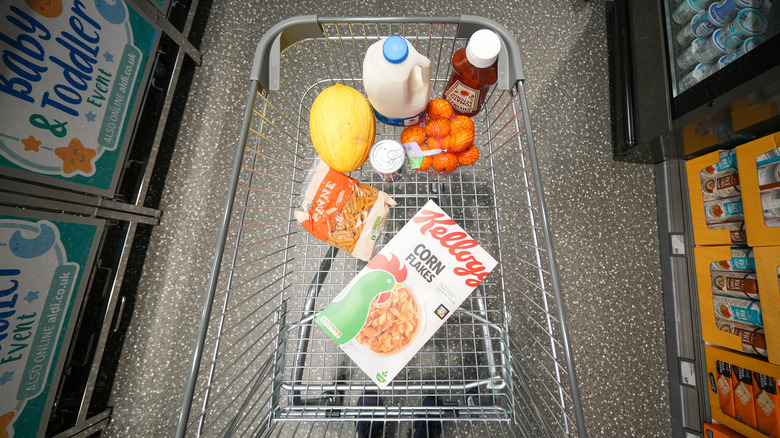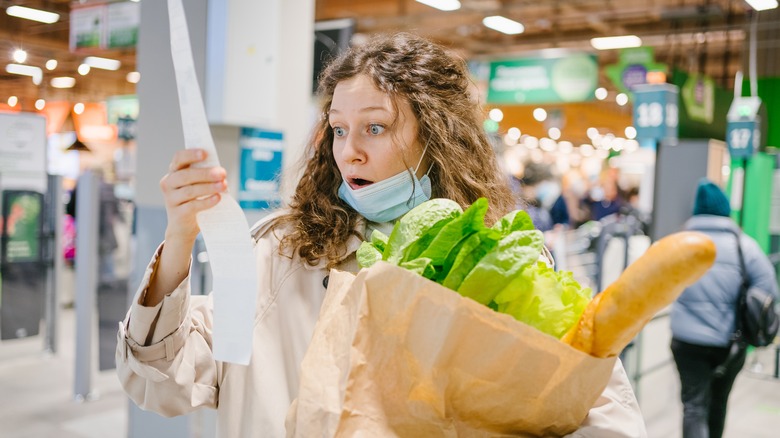New Data Examines How Inflation Continues To Lower Food Sales
While some prices on gas and food have decreased since hitting their peaks in spring and early summer, there is no denying that costs are still up at the grocery store. According to a report by the United Nations, although world food prices dropped from July to August, they remain about 7.9% higher than they were in August 2021. This continued strain on shoppers' wallets has led some consumers to find places to cut back and new research shows that while grocery retailers are reporting higher dollar sales, the actual amount of food being purchased has dropped in the last year.
According to Food Business News, market research firm IRI has released data showing grocery trends over the past year and while the report notes that many grocers are touting their increased sales totals in dollars, for most items, the number of units sold has decreased since this time last year. In fact, of the 178 tracked food and beverage categories, 141 had their number of units sold stay level or decrease since 2021, including staple products like dairy milk and grain-based products like cereal and fresh bread.
Those decreases are largely attributable to ongoing inflation issues caused by supply-chain problems and Russia's war with Ukraine as both countries are major suppliers of grains used for both direct consumption and for livestock feed.
A multi-faceted issue
Food Business News notes that there are other factors that could have contributed to the decrease in sales of some categories, including a spike in stockpiling amid the pandemic. However, the grain products were notably down even from pre-pandemic levels in 2019. UN News notes that this could be eased somewhat because an August agreement between Ukraine, Russia, and Turkey has allowed for more shipments of grain and cooking oil to leave the Black Sea, which has lowered prices. Still, it is uncertain if the deal will hold long term.
Further complicating grain prices is the continued high price of fertilizer. Russia is a large supplier of fertilizer materials and its manufacturers require lots of natural gas, both of which are impacted by the war (per The ETF Institute). The fertilizer shortage has also led to an international shortage of carbon dioxide– a bioproduct of fertilizer production– which is predicted in turn to cause an increase in prices for frozen foods and carbonated beverages.
Another explanation for the decrease in items sold was observed by Food Ingredients First, which noted that many customers are attempting to bulk buy by finding deals on larger sizes or stocking up on items like canned food, pasta, and rice which go further for at-home meals.

